Detailed introduction of the University of Maribor:
Introduction
The University of Maribor is the second largest and second oldest public research university in Slovenia, with a reputation in Central and Southern Europe for its rigorous scholarship and academic freedom.
Overview
Students and Faculty: In 2023, there are 13,988 students, including 8,756 undergraduates and 3,934 masters/graduate students. International students account for about 12% of undergraduates and 8% of graduate students. The faculty and staff are about 1,800 people.
Course settings: Undergraduate, master's and doctoral programs are offered, covering a wide range of professional fields. Since the 2010/2011 academic year, only students who meet the Bologna Process are admitted.
History and establishment time
In 1859, under the impetus of Bishop Anton Martin Slomšek, the Slovenian Theological Seminary was established in Maribor, becoming the first college of the University of Maribor.
In 1863, the two-year Teacher Training College was established, and in 1888 it was transformed into a four-year Teacher Training College.
Between 1959 and 1961, the Maribor University College Association was established, including the School of Economics and Business, the School of Technology, etc. In 1960, the Agricultural College, the School of Law and the School of Dentistry were established.
In 1975, the above-mentioned higher education institutions held a joint meeting and announced that the Maribor University College Association was renamed the University of Maribor.
School strength
Academic ranking: ranked in the 2025 QS World University Rankings 901-950 range, QS Emerging Europe and Central Asia ranking 2022 ranked 80th, according to Thomson Reuters Basic Science Indicators data analysis, the school's physics ranked in the top 1% of the subject, and a total of 9 research institutions ranked in the top 1% of the field.
International Exchange: Since 1998 Since 2000, it has participated in the European Framework Cooperation Program, and the number of international research projects has increased year by year. It is a member of various international associations, such as the European University Association, and actively participates in international exchange programs such as the Erasmus Program, and has signed inter-school cooperation and exchange agreements with hundreds of universities around the world.
Institutional Nature
Public University.
Educational Philosophy
Taking the dissemination and enrichment of knowledge as the primary mission and guiding principle, it focuses on interdisciplinary development, encourages academic freedom, and creates a good working environment to promote the production of top scientific and artistic achievements.
It emphasizes student participation in research and decision-making institutions, attaches importance to cooperation with the economic field, promotes the transformation of knowledge and technology into practice, and the connection between students and graduates and employers in the job market, and is committed to cultivating active, critical and responsible citizens and promoting the sustainable development of society.
Key laboratories and disciplines
Key laboratories: No specific key laboratories are explicitly mentioned, but there are related scientific research facilities such as computing centers as scientific research support.
Key disciplines: Physics is its dominant discipline, ranking in the top 1% of global disciplines. In addition, the School of Economics and Business, the School of Law and other disciplines are also strong and have cultivated many outstanding talents.
Faculty
The University of Maribor has a total of 17 colleges, distributed in 8 cities across the country, as follows:
Colleges located in Maribor: College of Arts, College of Chemistry and Chemical Engineering, College of Civil Engineering, College of Electrical Engineering and Computer Science, College of Economics and Business, College of Teacher Training, College of Law, College of Mechanical Engineering, College of Medicine, College of Health Sciences, College of Social Sciences, College of Natural Sciences and Mathematics.
Colleges located in other cities: College of Criminal Justice and Security (Ljubljana), College of Agriculture and Life Sciences (Hoce), College of Energy Technology (Krško), College of Organizational Sciences (Kranj), College of Logistics (Krško, Celje), College of Tourism (Brezce).
Rankings
Ranked 901-950 in the 2025 QS World University Rankings, 80th in the 2022 QS Emerging Europe and Central Asia Rankings, 1128th in the US NEWS World University Rankings, and 1201st in the TIMES World University Rankings.
Expenses
Tuition fees vary by major and degree level, and no uniform standard is given. Taking the exchange student program with Hangzhou Normal University as an example, exchange students can be exempted from course fees and only need to pay the normal tuition fees of the school.
Campus environment
Geographic location: The main campus is located in the center of Maribor, the "European Cultural Capital", and the other campuses are distributed in different cities in Slovenia. The city where it is located, Maribor, is located between the European Alps, the Mediterranean Sea and the Pandonia Lowlands. It is the economic and cultural center of northeastern Slovenia. It is only 18 kilometers away from the Austrian border and has convenient transportation, making it easy to travel to surrounding European cities.
Teaching facilities: There are complete teaching and living facilities such as university libraries, student dormitories, computing centers, and sports centers on campus. Each college is also equipped with a separate library with a rich collection of paper books and electronic books, providing students with good learning and research conditions.
Natural environment: The tall Alps in the north of Maribor block the severe cold in winter, and there is a cool breeze from the Adriatic-Mediterranean Sea in summer. The city has fresh air and beautiful parks and gardens, which are suitable for living, learning and working.
-
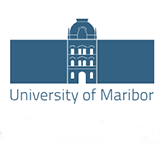
University of Maribor
-
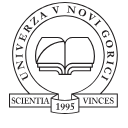
University of Nova Gorica
-

School of Advanced Social Studies
-
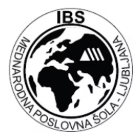
IBS International Business School Ljubljana
-

International School for Social and Business Studies
-

GEA College
-
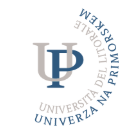
University of Primorska
-
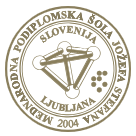
Jozef Stefan International Postgraduate School
-

University of Novo mesto
-

Faculty of Science of Psychotherapy Sigmund Freud University in Ljubljana
-

Mesoamerican University
-

Istmo University
-

Mariano Galvez University of Guatemala
-

Regional University of Guatemala
-

Galileo University
-

Francisco Marroquín University
-

Rafael Landívar University
-

University of the Valley of Guatemala
-

University of San Carlos of Guatemala
-

Technological Institute of Tlaxcala Plateau
-

Golfo University
-

Technological University of South Sonora
-

Technological University of Huejotzingo
-

Tizimín Institute of Technology
-

Chilpancingo Institute of Technology
